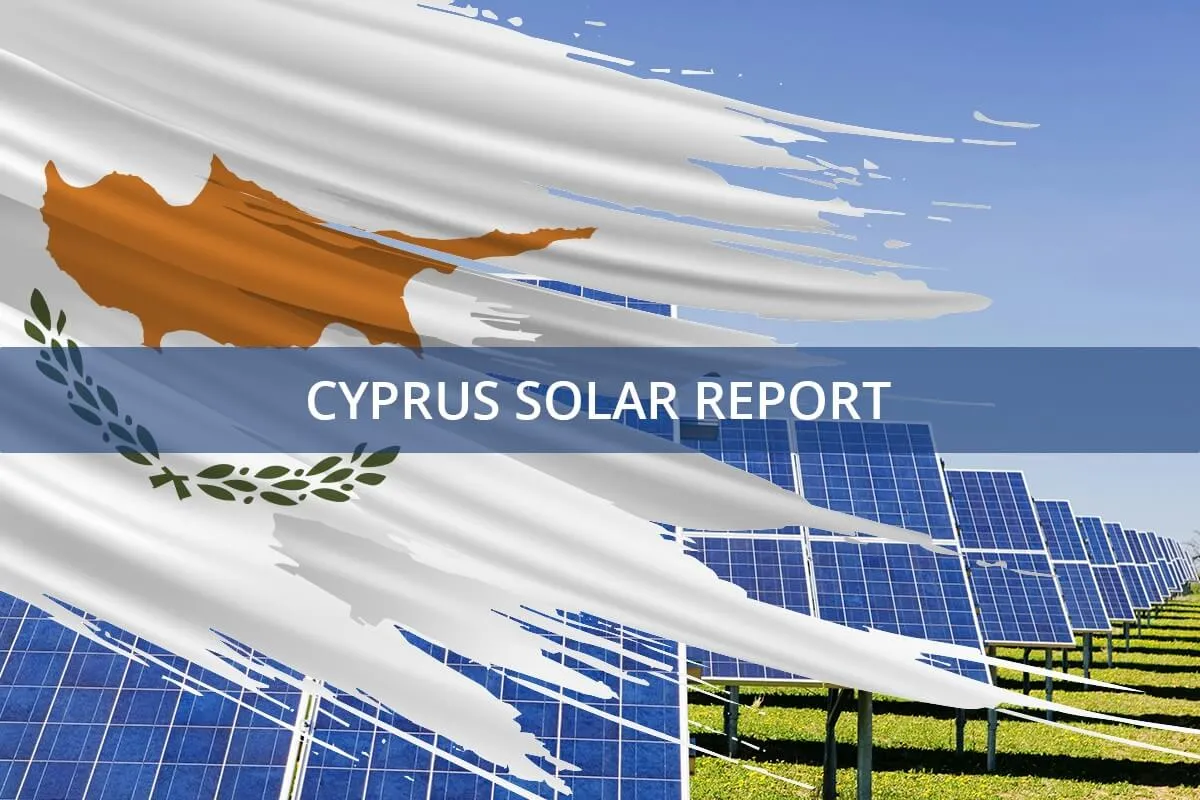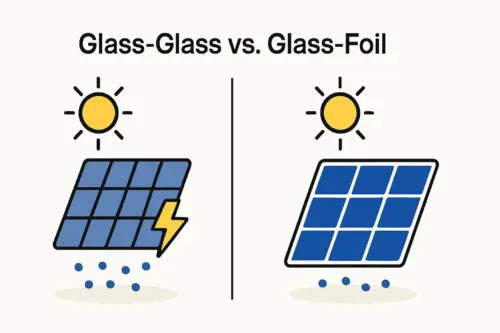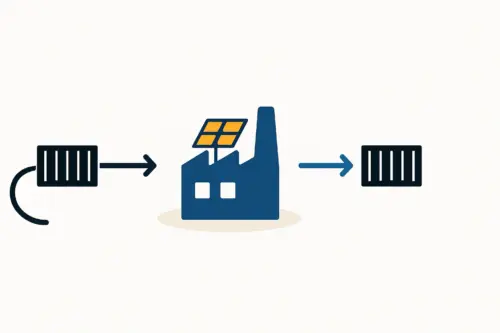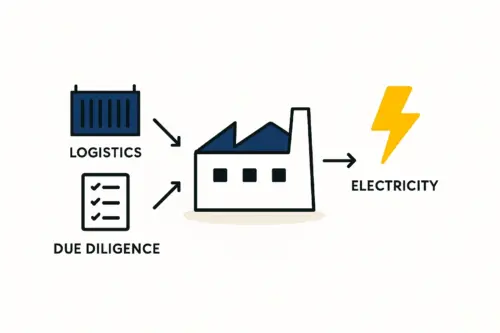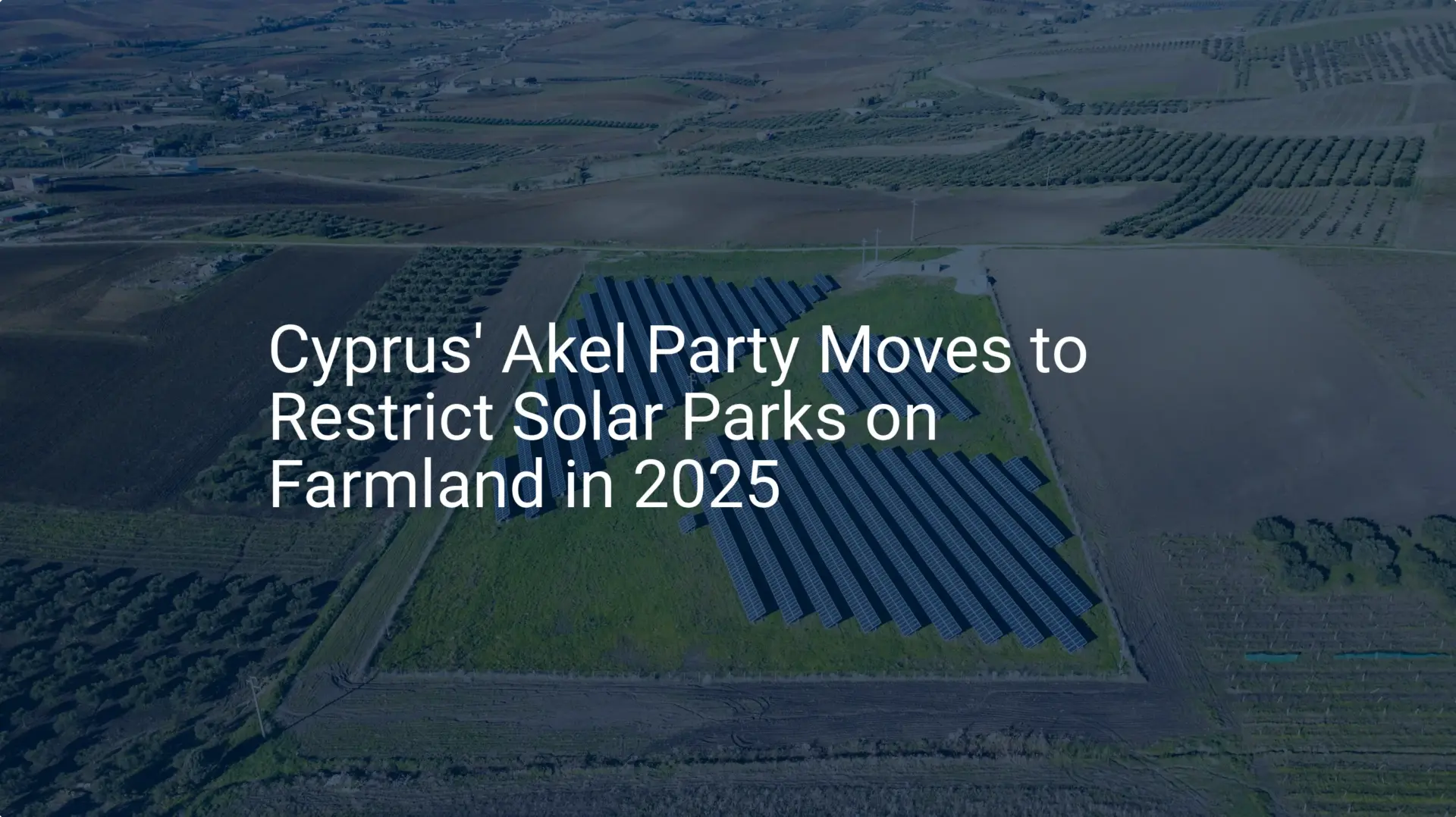Many entrepreneurs view securing European Union funding as a bureaucratic labyrinth best left to specialists. For an investor considering a solar panel manufacturing project in Cyprus, however, this perspective misses a key strategic advantage.
The EU’s extensive financial support mechanisms are not merely grants; they are powerful tools designed to de-risk investments, accelerate growth, and align new industrial projects with long-term European policy objectives.
This guide offers a clear framework for understanding and accessing the EU Structural and Investment Funds available for a solar manufacturing facility in Cyprus. It explains how these programs function and how to position a project to meet their core requirements, turning a complex financial landscape into an actionable business strategy.
Why Cyprus is a Strategic Location for EU-Funded Solar Manufacturing
Cyprus offers more than high solar irradiation and a favorable geographic position at the crossroads of Europe, the Middle East, and Africa. As an EU member state, it provides direct access to a suite of financial instruments created to catalyze the green transition.
The country’s ‘Cyprus – Tomorrow’ plan is the official roadmap for deploying these funds, with a strong emphasis on renewable energy, industrial innovation, and sustainable economic growth.
For an investor, this means a new solar manufacturing project is not just a commercial venture but a direct contributor to both national and EU-level policy goals. This alignment is the key to unlocking substantial co-financing opportunities.
Understanding the Key EU Funding Instruments
EU financial support is not a single monolith but a collection of distinct funds, each with a specific purpose. For a new manufacturing project, the most relevant sources fall into two main categories: the long-term Cohesion Policy Funds and the targeted Recovery and Resilience Facility.
The Cohesion Policy Funds: Building a Competitive Foundation
These funds are the EU’s primary investment tool for supporting long-term economic development and reducing regional disparities. For a solar factory, they offer crucial support for foundational elements.
-
European Regional Development Fund (ERDF): This is the principal fund for supporting innovation, digitalization, and the competitiveness of small and medium-sized enterprises (SMEs). For a solar manufacturing project, ERDF grants can be used to co-finance critical capital expenditures such as advanced production machinery, R&D facilities, and digital factory management systems.
-
European Social Fund Plus (ESF+): A factory is only as good as its workforce. The ESF+ focuses on improving employment opportunities and skills. It can provide funding for training programs to upskill local labor into qualified technicians, operators, and quality control specialists for your production line.
-
Just Transition Fund (JTF): The JTF is a specialized instrument designed to support regions transitioning away from carbon-intensive industries. While this may be less central for Cyprus, it underscores the EU’s commitment to creating new ‘green jobs,’ and a solar module factory fits perfectly into this category.
The Recovery and Resilience Facility (RRF): Accelerating the Green Transition
Established in response to the pandemic’s economic impact, the RRF is a performance-based fund designed to accelerate Europe’s green and digital transformations. Its energy component was significantly bolstered by the REPowerEU plan, which aims to rapidly reduce dependence on fossil fuels.
A solar panel manufacturing project in Cyprus aligns directly with the core objectives of the RRF and REPowerEU. Funding is disbursed through the national ‘Cyprus – Tomorrow’ plan, so applications are submitted to Cypriot authorities but must meet the RRF’s stringent criteria for sustainability and technological advancement.
From Policy to Practice: Navigating Cyprus’s Grant Schemes
The high-level EU funds are channeled through specific national programs. Investors don’t apply to Brussels directly but to the relevant Cypriot ministry or agency administering these schemes. Two prominent examples include:
-
‘Grant Scheme for the Creation, Modernisation, and Digital Upgrade of Manufacturing/Processing Units’: This program is a prime target for a new solar factory. It is typically designed to reduce initial investment costs by co-financing a percentage of eligible expenditures on new buildings, modern equipment, and software.
-
‘Grant Scheme for Enhancing the Competitiveness of SMEs in the Manufacturing Sector’: This scheme supports investments that improve productivity and innovation. A new facility deploying a state-of-the-art turnkey solar production line would be a strong candidate, as it introduces advanced technology and production capacity to the local economy.
Experience with similar turnkey projects in the EU shows that successful applications to these schemes can secure grants covering a significant portion of capital costs, substantially improving a project’s financial viability.
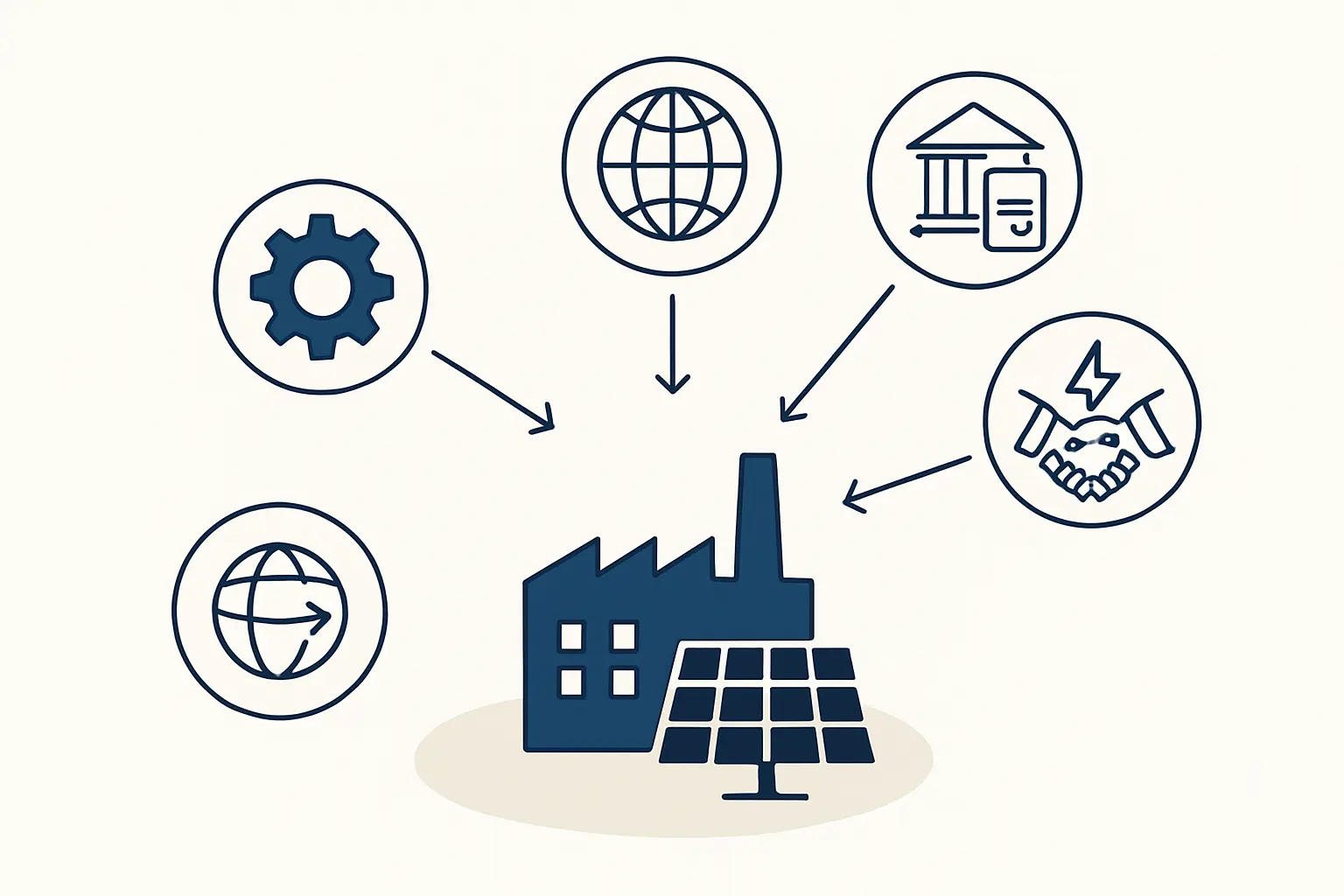
A Strategic Approach to Building Your Financial Case
Securing funding requires more than simply filling out forms. It demands a strategic approach that demonstrates a project’s value from multiple perspectives.
Aligning Your Project with EU and National Priorities
A successful application tells a compelling story. It must clearly demonstrate how the project contributes to key policy objectives. Your proposal should use the language of EU and Cypriot strategy, highlighting contributions to:
-
The Green Transition: Building local capacity for renewable energy technology.
-
Energy Independence: Reducing reliance on imported energy sources and components.
-
Digitalisation: Implementing Industry 4.0 principles in the manufacturing process.
-
Job Creation: Creating high-quality, skilled jobs for the local community.
-
Innovation: Potentially including an R&D component for module technology.
Blended Finance: The Modern Approach to Industrial Investment
Relying on a single source of funding is rarely optimal. The most robust financial plans use a ‘blended finance’ model, combining different types of capital to create a resilient structure. EU grants are designed to be part of such a mix, attracting and securing other forms of investment. A typical structure might include EU grants, national incentives, private equity, and conventional bank loans.
The Importance of a Comprehensive Business Plan
Every funding application, whether for a grant or a loan, begins with a credible and detailed plan. The authorities reviewing your proposal need to be confident in the project’s technical feasibility, market viability, and financial projections. A thorough business plan for solar panel manufacturing is not just a formality; it is the foundational document that proves your project is a sound investment for both public and private capital.

Frequently Asked Questions (FAQ)
Do I need to be an EU citizen to apply for these funds in Cyprus?
Generally, the key requirement is that the applying company must be registered and established in Cyprus. The project’s local economic impact, such as job creation and investment within Cyprus, is far more critical than the nationality of the company’s owners.
What is the typical timeline for a grant application?
The process can be lengthy, often taking six months to over a year from submission to final decision. It is crucial to start planning well in advance of your project’s target start date.
Is co-financing mandatory?
Yes, this is a fundamental principle of EU funding. Grants are intended to stimulate and support private investment, not replace it entirely. Applicants are always required to contribute a significant percentage of the total project cost from their own resources or other financing.
Can these funds be used for operational costs like salaries?
The majority of funds, such as the ERDF, are designated for capital expenditure (CAPEX)—the purchase of long-term assets such as machinery, equipment, and buildings. While some specific programs under the ESF+ can support costs related to employee training, these grants cannot be used to cover general operational expenses like day-to-day salaries or raw material purchases.
Conclusion and Next Steps
For business professionals entering the solar industry, the EU funding landscape in Cyprus represents a powerful strategic opportunity. By aligning a new solar manufacturing project with the clear policy goals of the green transition and energy independence, an investor can significantly improve the financial feasibility and long-term success of the venture.
Understanding this financial framework is a critical first step. The next stage involves developing a detailed project concept and a financial model that integrates these co-financing opportunities from the start. Structured educational resources, such as the e-courses on platforms like pvknowhow.com, can guide you through these complex planning phases and help ensure your project’s technical and financial foundations are solid.


